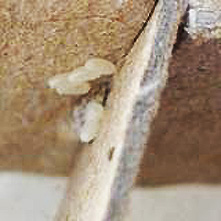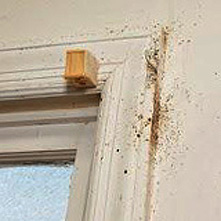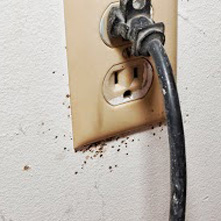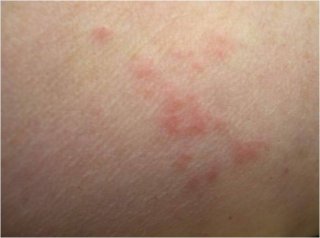How To Find Bed Bugs In Your House
How to Find Bed Bugs
Información relacionada disponible en español
If you have a bed problems infestation, it is best to find it early, before the infestation becomes established or spreads. Treating a minor infestation, while an inconvenience, is far less costly and easier than treating the same infestation later on information technology becomes more widespread.
Even so, depression-level infestations are likewise much more challenging to find and correctly place. Other insects, such as carpet beetles, tin can exist easily mistaken for bed bugs. If you lot misidentify a bed problems infestation, it gives the bugs more time to spread to other areas of the firm or hitchhike a ride to someone else's business firm to commencement a new infestation. Larn about identifying bed bugs.
Bites on the pare are a poor indicator of a bed bug infestation. Bed bug bites tin can await similar bites from other insects (such equally mosquitoes or chiggers), rashes (such equally eczema or fungal infections), or even hives. Some people do not react to bed bug bites at all.
On this page:
- Looking for signs of bed bugs
- Where bed bugs hide
- Bed issues behavior and habits
Looking for Signs of Bed Bugs
A more authentic fashion to place a possible infestation is to look for physical signs of bed bugs. When cleaning, changing bedding, or staying away from dwelling, wait for:
- Rusty or reddish stains on bed sheets or mattresses caused past bed bugs beingness crushed.
- Nighttime spots (well-nigh this size: •), which are bed bug excrement and may drain on the fabric similar a marker would.
- Eggs and eggshells, which are tiny (virtually 1mm) and pale yellowskins that nymphs shed as they grow larger.
- Live bed bugs.
Where Bed Bugs Hide
When not feeding, bed bugs hibernate in a variety of places. Around the bed, they can be found near the pipage, seams and tags of the mattress and box spring, and in cracks on the bed frame and headboard.
If the room is heavily infested, you may find bed bugs:
- In the seams of chairs and couches, between cushions, in the folds of curtains.
- In drawer joints.
- In electrical receptacles and appliances.
- Nether loose wall paper and wall hangings.
- At the junction where the wall and the ceiling run across.
- Even in the head of a screw.
Since bed bugs are only about the width of a credit bill of fare, they tin squeeze into really modest hiding spots. If a scissure will hold a credit card, it could hibernate a bed bug.

Close up of bed issues eggs on cardboard
Photo courtesy: Harold Harlan

Bed bugs along the side of a window frame
Photo courtesy: Jung Kim

Bed bugs along the bottom edge of an electrical outlet
Bed Bug Behavior and Addiction
Understanding the behavior of bed bugs (how they consume, live, and reproduce) will help you to observe an infestation before it becomes established and to monitor for the presence of bed bugs later on your home has been treated.
Feeding:
- Appear to prefer to feed on humans, but will feed on other mammals and birds as well.
- Will readily travel v-20 feet from established hiding places (chosen harborage) to feed on a host.
- Even though they are primarily agile at night, if hungry they will seek hosts in full daylight.
- Feeding can accept 3-12 minutes.
- The rusty or tarry spots found on bed sheets or in bug hiding places are considering twenty% of the fourth dimension adults and big nymphs will void remains of earlier claret meals while still feeding.
Life stages/mating:
- Bed bugs need at least one claret meal before the individual bug tin develop to the next of the vi life stages.
- They can feed more than than once.
- Each stage as well requires the molting of skin.
- To continue to mate and produce eggs, both males and females must feed at least once every 14 days.
- Each female may lay 1 to iii eggs per twenty-four hours and 200-500 eggs per her lifetime (6-12 months but could be longer).
- Egg-to-egg life cycle may take four to five weeks under favorable weather.
Living weather condition:
- Bed bugs can survive and remain agile at temperatures as low as 7°C (46°F), only they die when their trunk temperatures reaches 45°C (113°F).
- To impale bed bugs with heat, the room must be even hotter to ensure sustained heat reaches the bugs no matter where they are hiding.
- Common bed bugs are establish almost anywhere their host can live.
- Tropical bed bugs (Cimex hemipterus) require a college boilerplate temperature than the common bed bug and are found in tropical and subtropical areas.
Source: https://www.epa.gov/bedbugs/how-find-bed-bugs
Posted by: brownspoks1979.blogspot.com


0 Response to "How To Find Bed Bugs In Your House"
Post a Comment